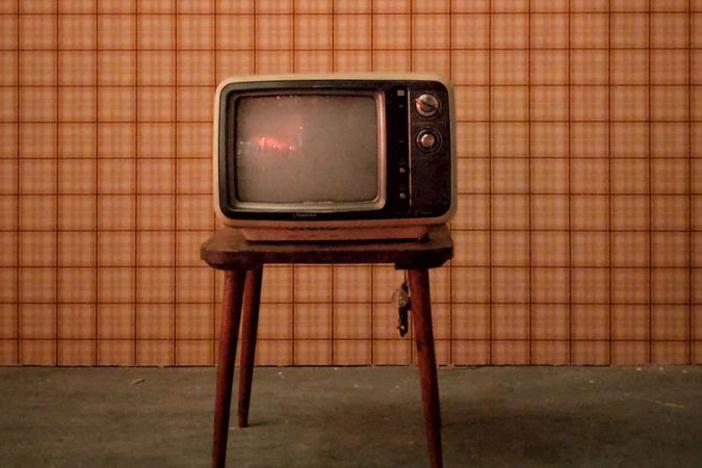by Kelly A. Harrison
October 3, 2023
Kelly A. Harrison, MFA, teaches technical communication at Stanford University and works as a writer and consultant in San José, CA. She edited West Winds Centennial, an anthology of works by the California Writers Club, for which she won the Ina Coolbrith award. Her works have appeared in literary journals and anthologies, including Reed Magazine, Hidden Compass, and Celebrate Creativity, and she writes for Technical Communication. She is the Associate Editor for West Trade Review.
The Loneliness Files by Athena Dixon; Tin House; 175 pages; $17.95
Athena Dixon’s second essay collection, The Loneliness Files, explores what it means to be lonely, to seek out loneliness while at the same time deeply struggling with it, while living a life of wanting to be seen yet feeling “invisible” to the world. Dixon’s intimate essays situate us in her home, her work, and even her journal entries as we’re drawn in to her thoughts about living alone, seemingly disconnected from the world at a time when technology keeps us connected in myriad ways. Dixon explores this dichotomy and others in language that is engaging, and more importantly, punctuated with introspection.
To say the collection of sixteen essays is easy to read and a pleasure to read does it a bit of a disservice; people often dismiss an enjoyable read as not covering important or tough subjects. But with Dixon’s collection, the ease resembles a warm conversation with a trusted and intelligent friend as she confides her struggles and inner turmoil, weaving her experience with greater social issues that left me simultaneously fulfilled and contemplating loneliness.
Each of the three sections in the emotionally resonant collection begins with a playlist of songs to set the mood. The inclusion of a song track connects us through the feelings the songs evoke while also tying in pop culture, a motif throughout the collection. Most of Dixon’s essays include references to TV shows and movies as well as social media and technology. Dixon explains how she often used the same VHS cassette to record All My Children and Star Trek: Deep Space Nine, so that the two shows merged and suddenly characters from the soap opera “would join an intergalactic family,” a family that included her crush—Jake Sisko. Her descriptions of “the lanky undulation of his gait” to “his voice breaking into manhood” feel like the glistening notes of “Hypnosis” by Raveena, a song from the recommended listening.
Her fantasies with a fictional TV character alongside her discussion of “unrequired love and one-sided friendships” made me wonder how much of loneliness today is a direct result of pop and digital culture? Does our technological society foster isolation, loneliness, depression? If it doesn’t directly cultivate these, as Dixon demonstrates, society certainly abets them, particularly through television. The tension of living in a technological world is that connections with others are easy (log in or tune in) but the connections are only semblances, ones that make me doubt my having connected the collection to an intimate conversation with a friend. The collection succeeds in delivering on multiple levels, from being an enjoyable read to deliberating on the deeper emotional struggles of our time.
This loneliness dichotomy, connected digitally but not necessarily emotionally, develops as Dixon describes her love and identification with fictional TV characters, often comparing her situation with those onscreen. Dixon’s use of pop culture can connect with readers even if, like me, the readers don’t get all of the references, because for Dixon the references to TV and movie characters are how she examines her feelings of loneliness. She feels an affinity with some, a diversion with others, and they work as metaphors for her experiences in a technological world that feels lonely and devoid of genuine human contact because she has chosen to supplant real humans with relationships with fictional ones. She’s very self-aware in this experience, noting at times conversations with her therapist or by going meta with the reader, offering introspections into her isolating behaviors.
The technologies, from TV to cell phones, from blogs to dating apps, offer Dixon some semblance of connection with people who share her interests. In her digital life, Dixon has over eight thousand followers of her Black Panther blog, and yet she feels deeply alone, living alone, sequestering herself in what sometimes seems like self-flagellation in a search for spiritual insight, although no great insight occurs, and this is perhaps the point—that we all have behaviors that isolate us in some way, so we identify with Dixon’s journey. This conflict between connection and rejection is a theme that follows Dixon from the fantasy realm of fan fiction to the corporeal world, for example in her challenges with online dating, which her therapist has recommended, or in her thoughts about real people who have died lonely deaths.
Dixon’s collection succeeds by drawing in readers through threads into our own lives, from those pop-culture references to our darker desires. In particular, several of the essays cover three cases of people who died alone, their decomposed bodies found much later, prompting Dixon to wonder who notices when a recluse dies. “I’m obsessed with these lonely ends. I keep running into stories about them and I can’t let go because more often than not they are a reflection of me.” These macabre thoughts, of a rotting corpse long forgotten, are one entry into the intangible relationship between loneliness and being alone in an ever-connected digital world, but Dixon knows her body would not be lost. If she died a similar “lonely corpse” death, she knows her family and friends would notice immediately because she is “profoundly, openly, and enthusiastically loved,” yet any story written about her death, she notes, would likely describe her as “aloof but a good person. Nice but not friendly.”
I wonder how she defines friendly—perhaps as an outgoing person who engages socially, perhaps at parties, something that Dixon would not do—because her writing seems imminently friendly to me. I’m invited into her world, asked to connect with her feelings or at least understand them. Maybe this author-reader connection, an understanding but at a distance, is how she best lets people into her inner world. She shows us her flaws more than her triumphs, and in that, we have a type of bonding with her through this work, a bonding that keeps the reader engaged. The collection has put her on display and we are noticing and loving the work, the author, the subject matter.
The collection’s tone is often quiet, reflective, and inward, but in “I was in Love with Jake Sisko,” as mentioned previously, Dixon provides a somewhat playful reflection about fandom. This respite from death also provides hope, a break in the lonely weather, because readers get to see Dixon enjoying herself, her passions and joys clearly in practice. Dixon describes how she, a divorced woman in her forties, finally decides to do something that she “had zero expectations for,” by writing fan fiction that often included herself as a character. I found myself cheering on her efforts to enjoy what she does, without the pressures she, and women like her, often put upon themselves. Women often don’t give themselves this permission until much later in life. Perhaps Dixon here has found one antidote for loneliness—engaging the self in pursuits simply for their inherent pleasures, a lesson we should heed.
Dixon doesn’t stay on the fair surface for long, though. She wonders if her escapism into fandoms in science fiction and fantasy is “the continuation of my being a lonely child and now an overwhelmed adult.” As she writes fan fiction, including herself as a heroine or creating new heroines in her image, she centers them as accomplished, intelligent, like her, but with control over how they are “noticed and loved.” Perhaps that control is one impetus for Dixon’s essay writing—control over what she lets the reader know about her inner life. Within these fantasies, Dixon finds some sort of meaning in addition to an expectation-free satisfaction, but Dixon is yanked out of this space where she found belonging when some attack her for, among other reasons, being too old to engage this way via the technological world. Any connection made in an online world seems to be countered by disembodied attacks or, as when she’s using a dating app, a manipulation via algorithm. Either way, the human is lost in the “game being played.”
Dixon ends with a piece that begins celebrating New Years Eve at the end of 2021, with people celebrating making it through yet another year of the pandemic. What will 2022 hold? Now, Dixon has not just her previously self-imposed isolation but a serious reason to isolate from others—the COVID-19 pandemic. In her isolation, her loneliness, Dixon has found the same cyclic elements as the coming of a new year: hope and possibility. One notable accomplishment of the collection is its ability to leave readers contemplating not just loneliness but also hope and possibility long after reading The Loneliness Files. In that contemplative state, perhaps we find ourselves connected in some way.
©2023 Iron Oak Editions LLC
__________________________________________________________________________________________________________________________________________________________________________
__________________________________________________________________________________________________________________________________________________________________________
__________________________________________________________________________________________________________________________________________________________________________
__________________________________________________________________________________________________________________________________________________________________________
__________________________________________________________________________________________________________________________________________________________________________
Seeking Connection in a Disconnected World: Athena Dixon’s The Loneliness Files
NONFICTION REVIEW
Stay Connected to Our Literary Community. Subscribe to Our Newsletter




